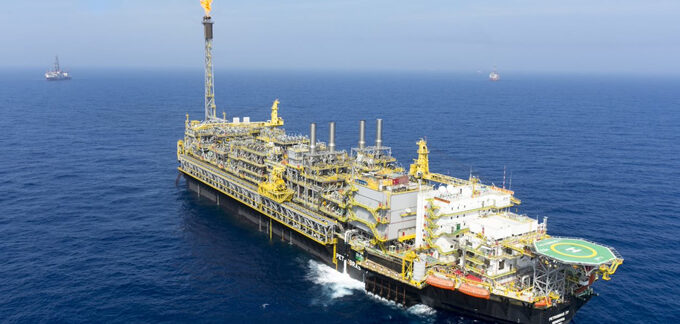Federal government’s share totaled 9.8 million barrels
Oil production in production sharing contracts in 2022 was almost four times higher than that recorded in the previous year. According to information from Pré-Sal Petróleo (PPSA), 233 million barrels of oil were produced by seven contracts, in comparison with 62 million barrels in 2021. 9.8 million barrels of that total amount were destined to the Federal government. Production under this regime started at the end of 2017 in the Mero Development Field back then, and has since maintained an accelerated growth pace. Peak production is expected to occur in 2030, according to a PPSA study.
The Búzios and Mero fields were the main producers in 2022, with 152 million and 34 million barrels of oil, respectively. Together, they accounted for 80% of total production. When the Federal government’s share was analyzed, these two fields were also the ones that contributed the most, accounting for 74% of production.
The production of natural gas also had an expressive result in 2022. 602 million cubic meters (m³) were made available for sale, more than triple of the 187 million m³ made available in 2021. The Búzios field was the main producer, accounting for more than half of the production (528 million m³). The Federal government had 48 million m³. Over 80% of the Union’s natural gas comes from the Entorno de Sapinhoá contract.
All data are part of the Monthly Production Bulletin prepared by PPSA and was released this Thursday, the 23rd. The Federal government’s natural oil volumes are marketed by PPSA as the cargo becomes available. In 2022, BRL 4.71 billion were raised for the National Treasury.

Main producers:

Production of December 2022
In December, the average daily production of the seven contracts was 761 thousand barrels, a result 4% lower than during the previous period. The three largest producers were the fields of Búzios (49% of the total, with 376 thousand bpd), Mero (187 thousand bpd) and Sépia (104 thousand bpd). The highlight of the month was the start of production, on the 21st, at the Itapu field, in the pre-salt layer of the Santos Basin, 200 km off the coast of Rio de Janeiro, with the platform vessel P-71. The average production was 8 thousand barrels per day.
The daily average of Federal government oil reached a record value of 41.79 thousand barrels. The highlights were the fields of Mero (28.41 thousand bpd), Búzios (5.31 thousand bpd) and Entorno de Sapinhoá (4.34 thousand bpd).
The production of natural gas for commercial use averaged 1.9 million m³/day, with 1.7 million m³/day coming from Búzios, 154 thousand m³/day from Entorno de Sapinhoá, and 25 thousand m³/day from Sudoeste de Tartaruga Verde. The result is 12% higher than the one registered in November 2021, due to the improvement in operational performance in the Búzios fields.
In the same month, the Federal government was entitled to an average production of 127 thousand m³/day, most of which came from Entorno de Sapinhoá (101 thousand m³/day), followed by Búzios (25 thousand m³/day) and Sudoeste de Tartaruga Verde (300 m³ /day). The average shows an increase of 34% in comparison to the previous period.


